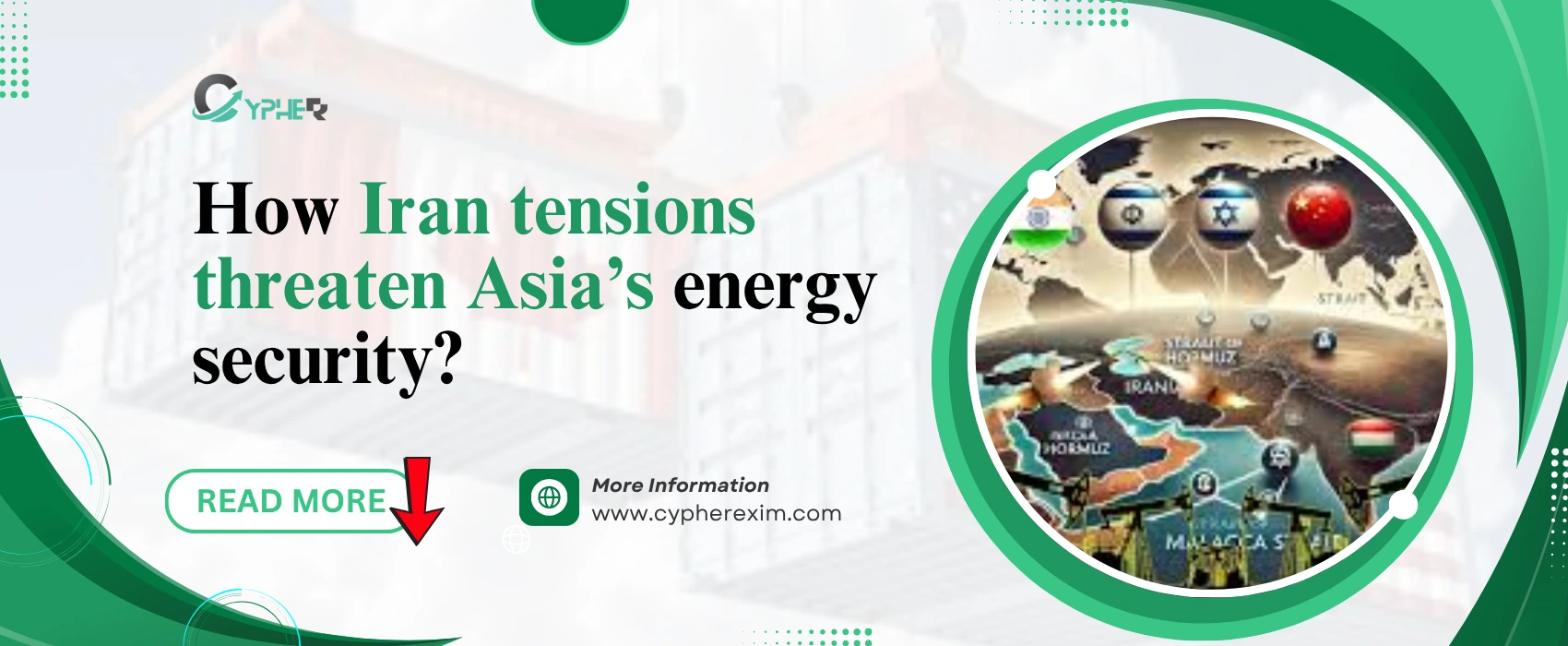How Iran tensions threaten Asia’s energy security?

Asia's energy supply lines are seriously threatened by the escalating Middle East conflicts, especially those involving Iran. Iran's strategic position as a major player in the world's oil and gas markets increases the likelihood of interruptions that might have an impact on economies like China, India, Japan, and South Korea that rely significantly on energy imports.
Asia’s dependence on Middle Eastern energy is substantial. Over 70% of the region’s crude oil and liquefied natural gas (LNG) flows through the Strait of Hormuz, a narrow chokepoint near Iran. Any escalation—whether through sanctions, military action, or blockades—could constrict this vital artery. A prolonged closure might slash global oil supply by 20%, driving prices to unprecedented levels. For Asia, this translates to higher costs for fuel, electricity, and industrial production, potentially stalling economic growth.
Iran’s role extends beyond crude oil. It supplies liquefied petroleum gas (LPG), critical for cooking and heating in countries like India and Indonesia. Disruptions could force these nations to scramble for alternatives, straining global LPG markets and inflating prices. Refineries in Asia, optimized for Iranian crude grades, would face challenges reconfiguring for other sources, leading to production delays and supply shortages.
The countries that rely on imports would be most affected economically. Since India imports around 80% of its oil, rising fuel prices could lead to a spike in inflation. South Korea and Japan, who depend on LNG to generate electricity, may have to limit their energy if supplies run out. China continues to rely on Middle Eastern oil for its industrial base while diversifying its energy mix. The region's manufacturing and export-based economies may be impacted by rising energy prices.
Complexity is increased by geopolitical manoeuvres. Even in the absence of physical impediments, sanctions on Iran may tighten the world's oil markets. Asian consumers may switch to Russian or Saudi suppliers, but a smooth transition may be hampered by logistical constraints and a lack of spare capacity. Risks are increased by Iran's ability to harm infrastructure or ships in retaliation for sanctions.
Resilience and diversification are key components of Asia's response. While China and India's strategic petroleum reserves provide short-term respite, longer-term fixes call for more comprehensive energy plans. Investing in nuclear power, renewable energy, and local gas production could lessen exposure to unstable areas. Increasing regional cooperation through agreements for energy sharing or cooperative stockpiling could potentially act as a shock absorber.
Companies are currently facing difficulties. Energy-intensive industries including manufacturing, petrochemicals, and transportation need to prepare for price increases. Inflation may be fuelled by businesses passing expenses on to customers. If shipping routes are changed to avoid conflict areas, logistics companies may experience delays and incur higher operating costs.
Asia's energy vulnerability is highlighted by the Iran war. The problem emphasises how urgent it is to lessen dependency on a particular area, even while short-term solutions like drawing from reserves can lessen effects. Asia should strengthen its defences against future shocks and guarantee stability for its businesses and people by promoting regional cooperation and quickening energy diversification.

Trump’s 50% Tariff on Steel: What Importers Must Know
05 June, 2025

U.S.-China Trade War: How Tariffs Are Reshaping Global Trade
07 Mar, 2025

New Zealand-USA Trade: Exports & Bilateral Relations Analysis
03 April, 2025

How U.S. Tariffs May Shift Global Trade Trends
08 April, 2025

India Restores RoDTEP for SEZs, EOUs & AA to Boost Exports
27 May, 2025

India-US Trade Deal: What It Means Globally
30 May, 2025